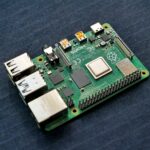A Bitcoin node is a computer that participates in the Bitcoin network by maintaining a copy of the Bitcoin blockchain, validating transactions and blocks, and relaying information to other nodes on the network. Running a Bitcoin node allows a person to participate in the decentralization of the Bitcoin network and contribute to the security and reliability of the network.
A full node is a type of Bitcoin node that stores a copy of the entire Bitcoin blockchain, which is currently over 300 GB. A full node is responsible for validating transactions and blocks, and relaying information to other nodes on the network. A node can be run on different operating systems such as Windows, Mac, and Linux.
A Raspberry Pi is a small, low-cost, and low-power computer that is often used for projects such as building a home media center or a retro gaming console. It can also be used to run a Bitcoin node. Running a Bitcoin node on a Raspberry Pi requires a few additional steps than running it on a more powerful computer.
The first step to running a Bitcoin node on a Raspberry Pi is to purchase a Raspberry Pi and all the necessary accessories such as a power supply, an SD card, and a case. Once the hardware is set up, you will need to install an operating system on the Raspberry Pi. The most popular operating system for running a Bitcoin node on a Raspberry Pi is Raspbian, a free operating system based on Debian Linux.
Once the operating system is installed, you will need to install the Bitcoin software on the Raspberry Pi. This can be done by downloading the Bitcoin Core software from the official website, and then compiling and installing it on the Raspberry Pi. This process can take several hours, depending on the speed of the Raspberry Pi.
Once the Bitcoin software is installed, you will need to configure it to run as a full node. This can be done by editing the configuration file and adding a few lines of code. This process can also be done by using an installer script, which makes the process much simpler.
After the configuration is done, you can start the Bitcoin node by running the Bitcoin software. It will take some time for the node to download and validate the entire blockchain. This process can take several days, depending on the speed of the internet connection. Once the blockchain is fully downloaded and validated, the node will be ready to participate in the Bitcoin network.
Running a Bitcoin node on a Raspberry Pi can be a fun and educational project that allows a person to participate in the decentralization of the Bitcoin network and contribute to the security and reliability of the network. However, it’s important to keep in mind that running a node on a Raspberry Pi has its limitations, such as slower speeds and less storage space. Additionally, it’s important to be aware of the electricity costs associated with running a node.







